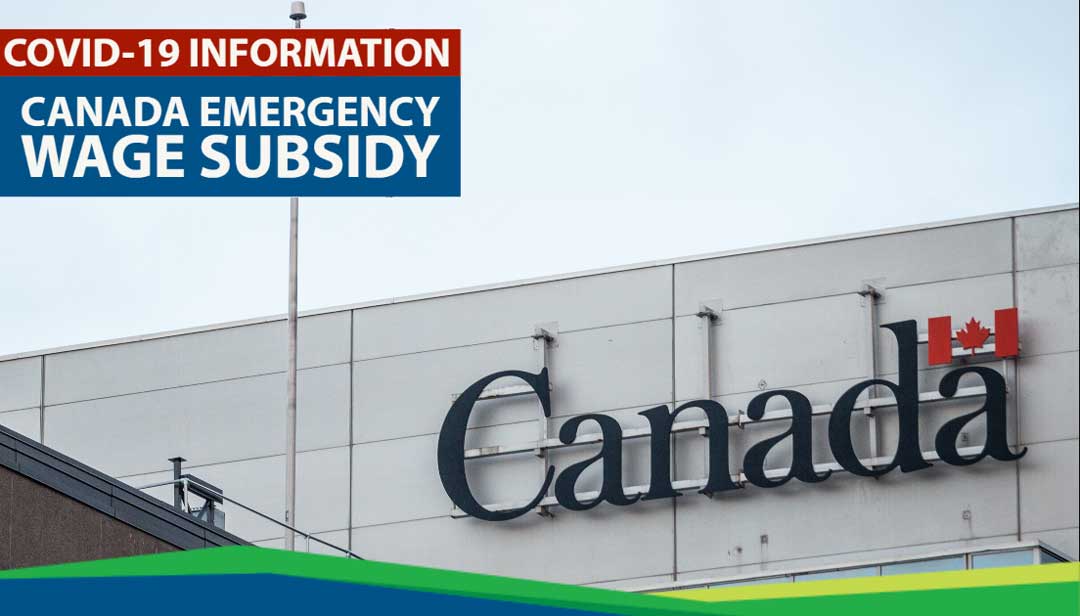
On July 17, 2020, the Government of Canada released details, as well as draft legislation, in respect of a redesigned Canada Emergency Wage Subsidy (CEWS) program effective from July 5, 2020. Pursuant to the backgrounder, the estimated total fiscal cost in 2020-21 for the CEWS program as announced on July 17, 2020 is $83.6 billion.
Below are highlights of the key changes, which are subject to the approval of Parliament.
- Extension of the CEWS: The CEWS will be extended until December 19, 2020. The redesigned CEWS program will apply to:
- Period 5 – July 5, 2020 to August 1, 2020;
- Period 6 – August 2, 2020 to August 29, 2020;
- Period 7 – August 30, 2020 to September 26, 2020;
- Period 8 – September 27, 2020 to October 24, 2020; and
- Period 9 – October 25, 2020 – November 21, 2020.
The Government has not released full details for Period 10 (i.e., November 22, 2020 to December 19, 2020).
- Elimination of 30% Revenue Decline Threshold: The Government has eliminated the 30% revenue decline threshold for Period 5 and onwards, with the amount of the CEWS now being correlated to the extent of an employer’s decline in revenue (subject to a safe harbour for Periods 5 and 6, as described more particularly below).
- Two-Part Subsidy Amount for Active Employees: For Period 5 and onwards, the CEWS for a week in respect of an “active” employee (i.e., an employee who is not on leave with pay for the particular week) will consist of two parts:
- A base CEWS amount will be available to all eligible employers who have experienced a decline in revenue, determined by comparing monthly revenue in the month to the same month in 2019 or the prior month to the prior month in 2019 (or, in certain circumstances, monthly revenue in the month or the prior month to average monthly revenue in January and February 2020). The base CEWS amount will be computed as a specified rate (which will vary based on revenue decline) applied to the amount of eligible remuneration of up to $1,129 paid to an eligible employee per week. Eligible employers with a revenue drop of 50% or more will be eligible for the maximum base CEWS rate, while those experiencing less than a 50% revenue drop will be eligible for a lower base CEWS rate. The maximum base CEWS rate will be reduced gradually over the qualifying periods from 60% in Periods 5 and 6, to 50% in Period 7, to 40% in Period 8 and to 20% in Period 9. Accordingly, the maximum weekly base CEWS amount (i.e., the amount payable in respect of an employer experiencing a 50% or greater revenue drop) will be $677 in Periods 5 and 6, $565 in Period 7, $452 in Period 8 and $226 in Period 9.
- A top-up CEWS amount of up to an additional 25% will be available for eligible employers who have experienced a revenue drop of more than 50%, determined by comparing average monthly revenue in the preceding three months to the same months in 2019 (or, in certain circumstances, to their average monthly revenue in January and February 2020). The top-up CEWS rate will be equal to 1.25 times the average revenue drop that exceeds 50%, up to a maximum top-up CEWS rate of 25%, which is attained at a 70% revenue drop. The top-up CEWS amount will be computed as the applicable top-up CEWS rate applied to the amount of eligible remuneration (not exceeding $1,129) paid to an eligible employee per week.
Source: McCarthy Tétrault, July 19th, 2020
Newsletters
No Results Found
The page you requested could not be found. Try refining your search, or use the navigation above to locate the post.
Events & Sponsorship
No Results Found
The page you requested could not be found. Try refining your search, or use the navigation above to locate the post.
Articles & Publications
What Is Bookkeeping?
To understand the financial health of your business, you need to have precise bookkeeping. Bookkeeping involves verifying receipts, depositing payments into a bank account, and keeping clear records so that all financial information is easily accessible when needed....
Changes to RRSP and CPP in 2021
The Canada Revenue Agency (CRA) has made annual announcements about the nation’s retirement programs. Namely, the Canada Pension Plan (CPP) and the Registered Retirement Savings Plan (RRSP) are being updated as we enter the new year. Here are the changes you need to...
CRA Collection Letters for CERB Ineligibility & Repayment
The Canada Revenue Agency has begun issuing formal collection letters for CERB repayment to recipients who may or may not have been eligible for the payments they received. You may have received a letter from CRA regarding CERB payments to be paid back along with one...
TFSA limit for 2021 released
The TFSA new contribution limit for 2021 has been officially released. That limit is $6,000, matching the amount set in 2019 and 2020. With this TFSA dollar limit announcement, the total contribution room available in 2021 for someone who has never contributed and has...
CERB has ended, here is what to know about your benefits
After providing millions of Canadians with financial relief since the beginning of the pandemic, the Canada Emergency Response Benefit (CERB) will be coming to an end on Saturday and recipients will be forced to transition to a recently updated Employment Insurance...